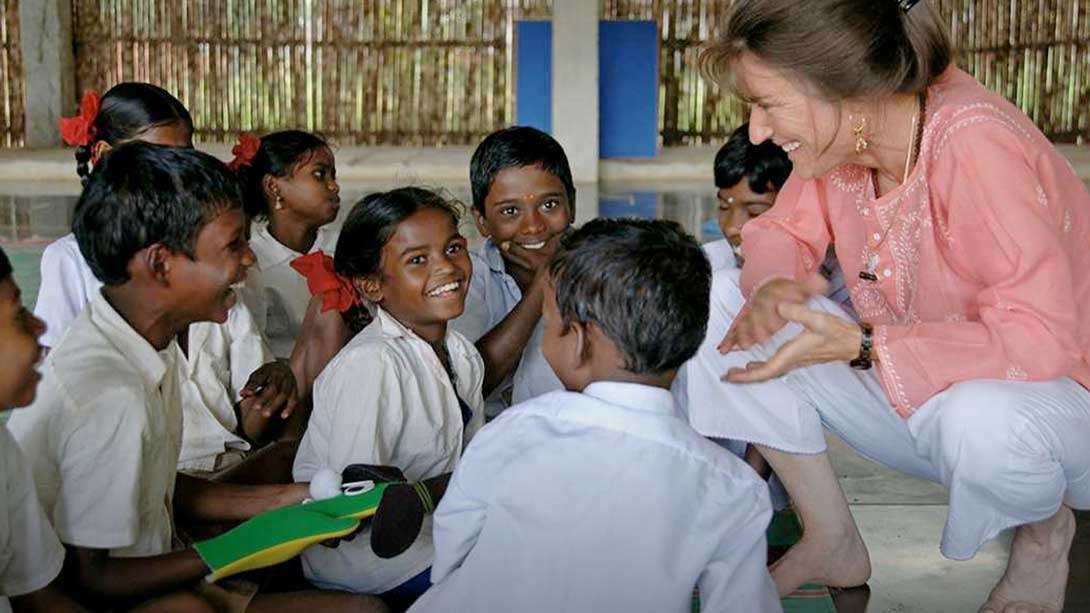Building India Through Public-Private Partnership
Sadhguru discusses the potential of the Public-Private Partnership model in the fields of education and health. This is not charity, he explains, but an investment in the future.

Q: The Public-Private Partnership (PPP) model is being seen as a possible solution for many problems. Do you think such a model has potential?
Sadhguru: It is definitely sensible to go that way in certain areas because government infrastructure is already present, and there is no sense in building parallel infrastructure. For example, through Isha Vidhya, our rural education initiative, we are building one school in every district in Tamil Nadu, which will serve as a model school. But this cannot be a comprehensive solution because creating new infrastructure is an enormous task.
Subscribe
So we have been working with the government and now we have adopted 516 government schools in Tamil Nadu and Andhra Pradesh. A government school already has land, buildings and teachers. Many of the teachers are very dedicated, which has been a revelation for me. As part of the initiative, we brought in a few extra teachers, extracurricular activity for the children, and set systems to maintain cleanliness and enhance the teaching process where needed. We are no longer bogged down with building infrastructure because it already exists. PPP would work wonderfully in an initiative like this.
Companies can also get involved in higher education. Right now, India’s higher education is just a numbers game. We produce 500,000 engineers but not even 50,000 are really employable. They get a degree that works only in the marriage market, nowhere else! I was speaking at the Indian office of one of the world’s largest truck manufacturers, and I was suggesting that they get involved with an engineering college and start training students right from the second year. This way, you can transfer your know-how, work ethic and quality standards right from college. Then you don’t have to struggle and start orienting them three years later when you hire them. And because they have been trained by you, students will definitely have a certain loyalty towards you. So far, industries have only been thinking of recruiting from the best colleges. There is a lot of intellectual brilliance elsewhere. It is just that they have not had the exposure.
Another significant area where PPP can work is in children’s nutrition. One of India’s biggest problems is that nourishment levels are extremely low for most children between zero to four years of age. Medical science clearly tells us that if children don’t get the right kind of nourishment in the first four years, their body and mind will not develop normally no matter what you do after that period. Those first four years are vital. As a part of this, we spoke to a group in the United States to create little vitamin tubes. These will be sweet to taste and a child can just suck upon it to get all the micronutrients necessary for his or her development. That little vitamin capsule can make a lot of difference, and it doesn’t cost anything. Our estimates a few years ago put the cost at around twenty-seven paisa per child per day. Or if you can’t give it every day, if it can be provided to the child even thrice a week, we would produce much healthier human beings.
The biggest challenge in the future will be to find employable human resource. Investing in health and education will create a situation that all businesses will cherish.
Today, for at least sixty percent of the people in our villages, even their skeletal system has not grown to its full size. Generally, we always associate a villager with sturdiness. But if you look at the 18, 20-year-old boys in villages today, they look shrunken. When a fundamental aspect of the physical body does not grow to its full size, your brain will definitely not grow to its full potential either. We are in the process of producing a whole mass of substandard humanity. This is a quiet disaster happening in the nation. It is not like a tsunami or an earthquake – it does not make any noise, but it is progressing very quickly. Unless we invest in a big way in human health and education, we will continue to perpetuate this disaster.
The nation’s economic aspirations and the tremendous economic upsurge we are witnessing right now could come to naught if we do not focus on these core areas. Health, nourishment and education are the key elements for a human being to live well. It is time that private corporations invest in these areas. This is not charity; this is an investment for the future. Charity is not a sustainable thing. But if we can make a contribution in terms of enhancing the competence and capability of those around us, that would be very effective. The biggest challenge in the future will be to find employable human resource. Investing in health and education will create a situation that all businesses will cherish. Even when a farmer plants a coconut tree, he waits ten years to see money. This is an investment for the future that must happen.
Editor’s Note: Learn more about Isha Vidhya schools and the Government School Improvement Program.


